One of the most common teeth problems that people want to have treated is tooth discoloration. There are a number of things people don’t think about with regard to tooth discoloration, and we’d like to take a few moments to look at the different kinds of discoloration that may occur.
Broadly, there are two kinds of tooth discoloration – Extrinsic and Intrinsic
Intrinsic stains are stains on the Interior of the tooth surface,
Extrinsic stains are stains on the Exterior of the tooth surface,
Both extrinsic and intrinsic stains have different causes, and the kind of stain that a person suffers from will determine the most ideal whitening treatment option for their needs.
Stains Caused By Tobacco Products
Tobacco products can lead to major extrinsic stains, causing the teeth to look brown or yellow. There are already plenty of compelling health reasons to avoid cigarettes, cigars, and chewing tobacco, and these aesthetic issues are also worth considering.
Stains Caused by Foods and Beverages
A number of common foods and beverages have been known to cause extrinsic stains as well, these include:
Coffee, Tea, Colas, Red wine, Beets, Curries, Carrots, Blueberries, Tomatoes
In essence, if it can stain a white shirt badly, it can lead to gradual dental stains over time.
Stains Caused by Medications
Medications of varying kinds can cause intrinsic dental stains to occur. Some common medications that cause tooth discoloration include:
Tetracycline, Doxycycline, Antihistamines, Antipsychotic medications, Antihypertensive drugs
Stains Caused by Fluoride
Fluoride can cause intrinsic and extrinsic dental stains, though not in the way that you’d think. Rather than yellow or brown stains, overexposure to fluoride can lead to chalky and over-white patches on the teeth.
Stains Caused by Tooth Decay and Injury
Dental problems can cause stains to occur, some extrinsic (such as those causes by cavities and tooth decay) and some intrinsic (such as those caused by root canal infections).
Stains Caused by the Natural Aging Process
Over time, wear, tear, and combinations of the various factors above can lead to tooth discoloration and gradual stains appearing on the smile. This is normal, though it can be minimized or even treated.
Options for Dealing with Tooth Discoloration and Stains
For most extrinsic stains and discoloration, professional teeth whitening treatment can work wonders and brighten the teeth between 4-9 shades brighter.
Intrinsic stains, stains on the interior of the tooth surface can be harder to remove and would require an examination by an iSmile™ Teeth Whitening Practitioner who can assess your teeth and the type of staining. As you can see there is more to the removal of tooth stains than you may have guessed which is why it’s important to meet with your Teeth Whitening Practitioner about your options for advanced Teeth Whitening.
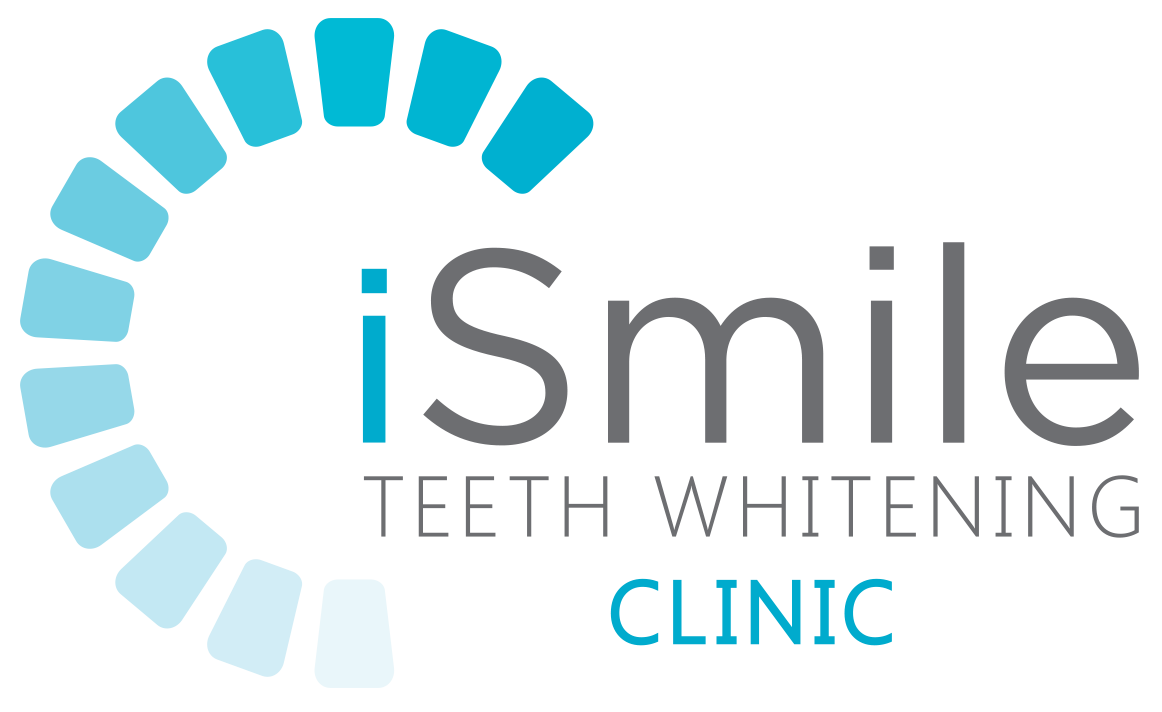

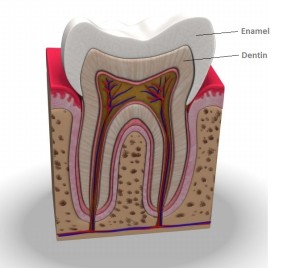 Enamel is the window through which we see the underlying layer white Dentin.
Enamel is the window through which we see the underlying layer white Dentin.
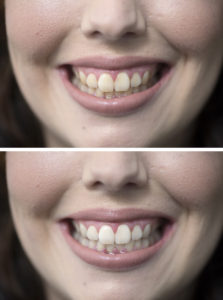
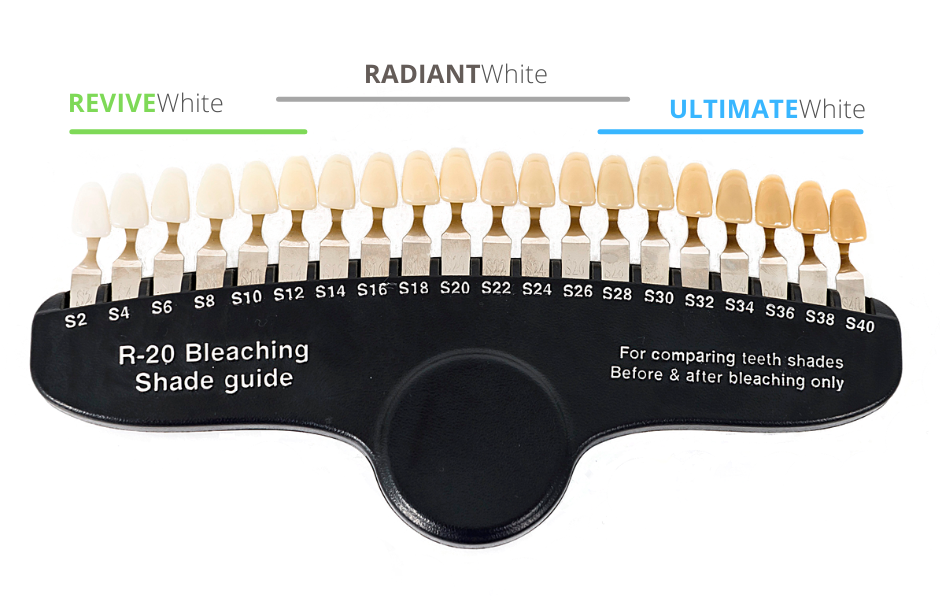
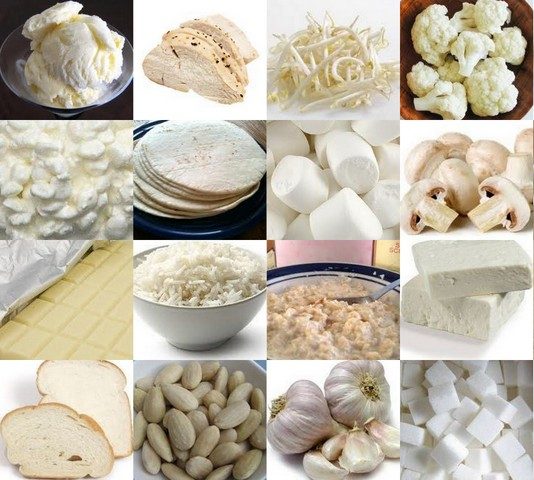
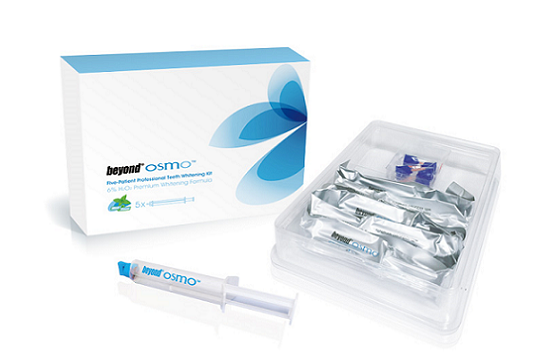
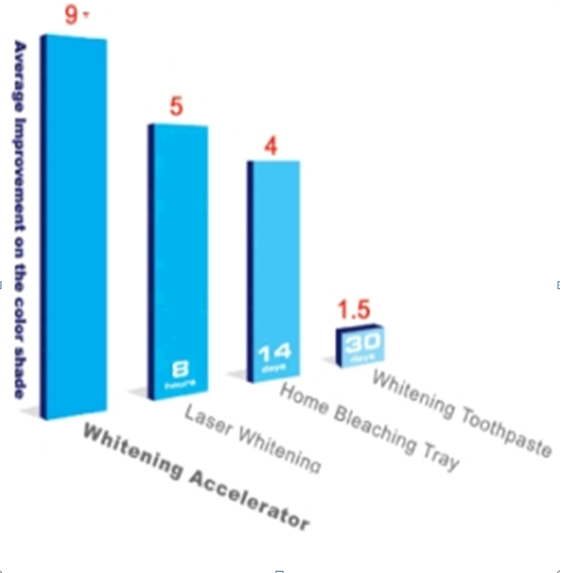 Various claims are made by the manufacture of whitening tooth pastes, in truth it could take up to 18-months or longer to whiten your teeth only one shade lighter through daily use of a toothpaste-whitening product as compared to using a professionally applied whitening gel that will generally whiten teeth between 4-9 shades brighter over a 1.5 hour procedure period. The reason for this is toothpaste is diluted by saliva and is only in your mouth for a few minutes or less. Moreover, because the outside of your teeth, the enamel, is clear. Whitening toothpastes simply remove surface stains on the enamel with mild abrasives or special chemical or polishing agents rather than bleaching through to the dentin.
Various claims are made by the manufacture of whitening tooth pastes, in truth it could take up to 18-months or longer to whiten your teeth only one shade lighter through daily use of a toothpaste-whitening product as compared to using a professionally applied whitening gel that will generally whiten teeth between 4-9 shades brighter over a 1.5 hour procedure period. The reason for this is toothpaste is diluted by saliva and is only in your mouth for a few minutes or less. Moreover, because the outside of your teeth, the enamel, is clear. Whitening toothpastes simply remove surface stains on the enamel with mild abrasives or special chemical or polishing agents rather than bleaching through to the dentin. THE DENTAL ADVISOR awards are considered the most prestigious and respected awards in the Dental Industry. Dental Advisor awards where created to recognise the best quality products and equipment, taking into account clinical and evidence-based research to honor the finest.
THE DENTAL ADVISOR awards are considered the most prestigious and respected awards in the Dental Industry. Dental Advisor awards where created to recognise the best quality products and equipment, taking into account clinical and evidence-based research to honor the finest.